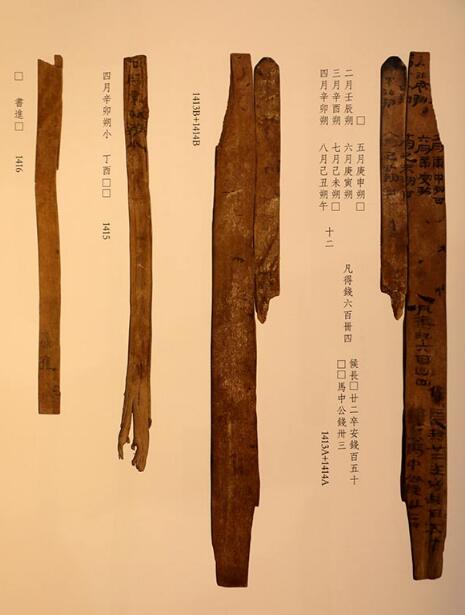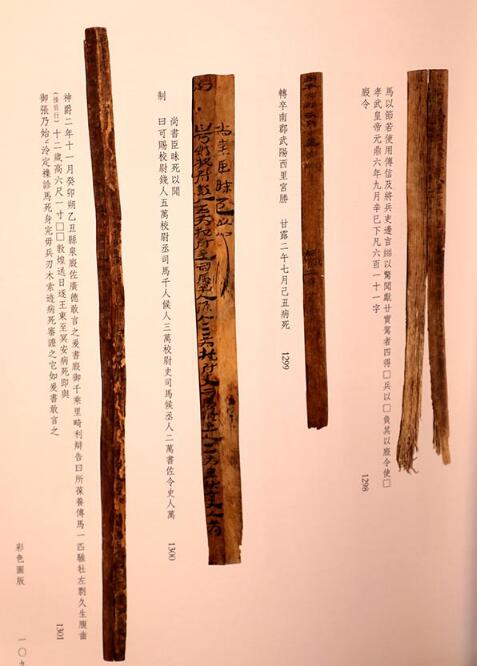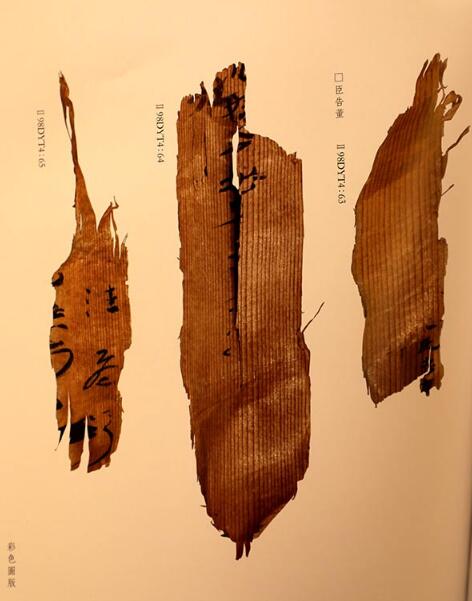Gansu Jiandu Museum showcases bamboo and wooden slips culture
The latest scientific achievements on bamboo and wooden scripts of the Han Dynasty (206 BC-AD 220) were presented on a conference by Gansu Jiandu Museum in Lanzhou in the capital city of Gansu province on Dec 18.

The covering of the Yumen Pass Bamboo Slips of the Han Dynasty. [Photo provided to chindaily.com.cn]
Titled "Bamboo and Wooden Slips Tell Chinese Story Through Books", the conference centered around Xuanquan Bamboo Slips of the Han Dynasty and Yumen Pass Bamboo Slips of the Han Dynasty.
Xuanquan Bamboo Slips of Han Dynasty was collected, preserved and exhibited by the Gansu Jiandu Museum, Gansu Provincial Institute of Cultural Relics and Archaeology, Shaanxi Normal University Advanced Institute of Humanities and Social Sciences, and Tsinghua University Unearthed Research and Protection Center, while the Yumen Pass Bamboo Slips of the Han Dynasty by the Gansu Jiandu Museum and other units. Both books have been published.

The Yumen Pass Bamboo Slips of the Han Dynasty. [Photo provided to chindaily.com.cn]
This is the latest major achievement of the Gansu Jiandu Museum following academic achievements such as Han Dynasty Wooden Slips from Jianshuijinguan, Han Dynasty Bamboo Slips from Diwan and Bamboo and Wooden Slips Explanation of the Qin and Han dynasties in Gansu. It will bring new academic growth to the historical research of the "Belt and Road" and provide first-hand information for the research of the Silk Road.

The Yumen Pass Bamboo Slips of the Han Dynasty. [Photo provided to chindaily.com.cn]
Before the paper was invented and widely used, ancient people wrote characters on bamboo, wood, and other materials, and compiled them into a book with silk and hemp. It was called Jiandu, which means bamboo and wooden scripts.
Gansu province is rich in bamboo and wooden slips. Since 1907, more than 80,000 slips have been unearthed. Among them, the Bamboo Slips of the Han Dynasty is the largest, with a total of over 70,000, accounting for more than 80 percent of the total number of the Han Dynasty Bamboo Slips unearthed in the country.

The Yumen Pass Bamboo Slips of the Han Dynasty. [Photo provided to chindaily.com.cn]
Gansu Jiandu is not only an encyclopedia from the Qin Dynasty (221-206 BC) to the Qing Dynasty (1644-1911), but also a physical evidence of the development and prosperity of the ancient Silk Road. It possesses high historical, scientific and artistic value. At present, the Gansu Jiandu Museum has preserved more than 40,000 pieces of Jiandu and over 10,000 cultural relics unearthed along with it.
In this publication of Xuanquan Bamboo Slips of the Han Dynasty, the preface records the whole process of the discovery, excavation and research of the Xuanquanzhi Ruins and the Xuanquan Bamboo Slips of the Han Dynasty. The following list is attached with relevant information of size, age and texture, providing high-level original materials for academic research on topics such as the Han Dynasty, Northwest China, and the Silk Road.

The Yumen Pass Bamboo Slips of the Han Dynasty. [Photo provided to chindaily.com.cn]
Yumen Pass Bamboo Slips of the Han Dynasty contains 729 bamboo and wooden slips of the Han and Jin Dynasties (including 2 bamboo slips of Jin Dynasty) unearthed from various beacon tower ruins in Dunhuang and stored in the Dunhuang City Museum over the years, including 381 excavated at the Yumen Pass ruins in 1998, 57 Xuanquan bamboo slips of the Han Dynasty collected at the Xuanquanchi Ruins from 1987 to 1990, and 79 sporadic bamboo slips of the Han Dynasty collected at other beacon tower ruins since 1990. They were all published for the first time. The other 212 pieces have been published before, but this time they are reorganized, with clear pictures and more accurate interpretations, they will be presented to the readers in a new look.
Its collation and publication is of special significance for studying the functions and functions of Dunhuang county and Yumen Pass on the Silk Road.

